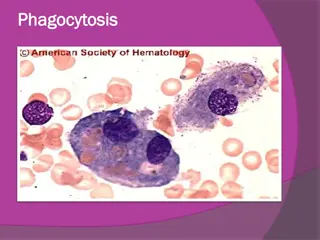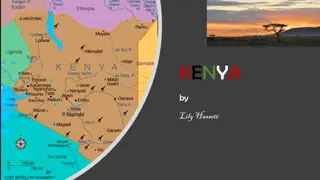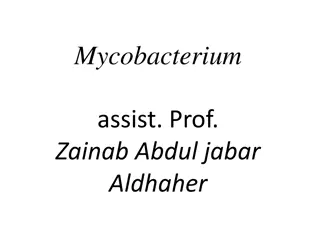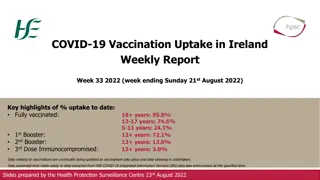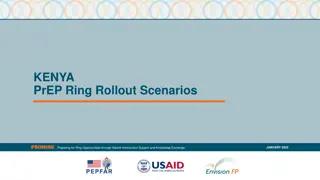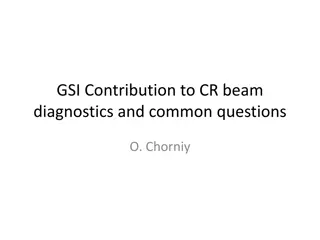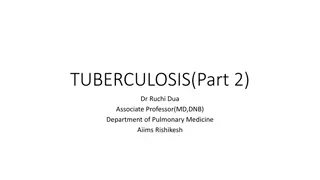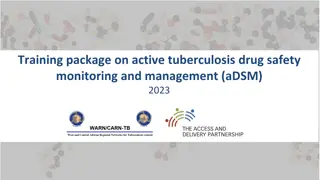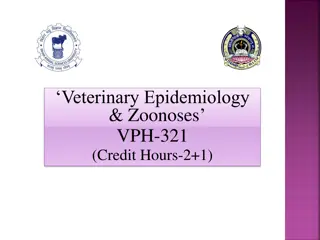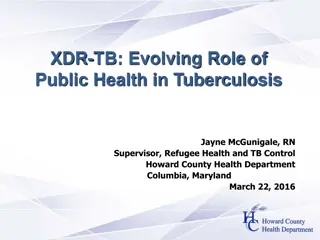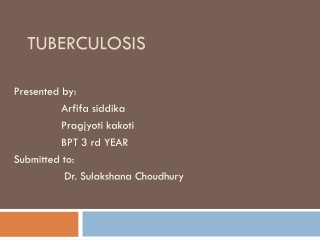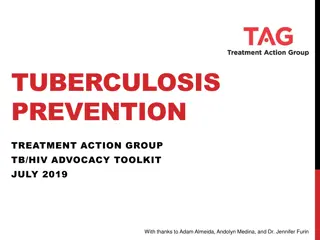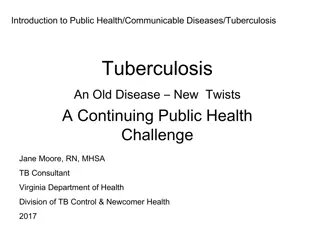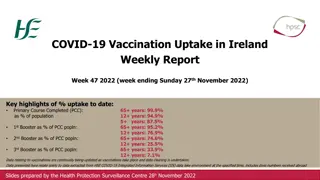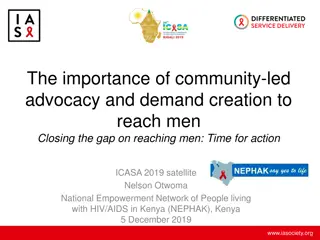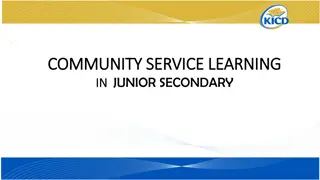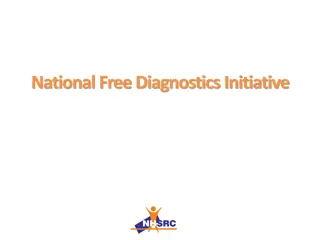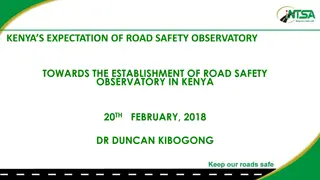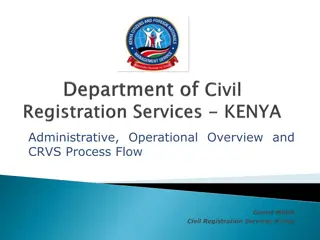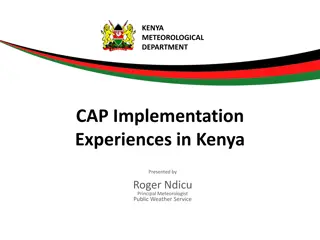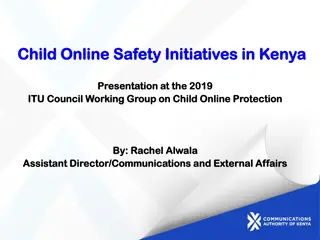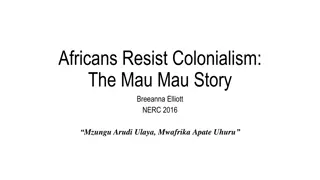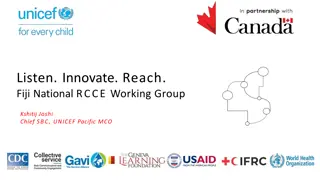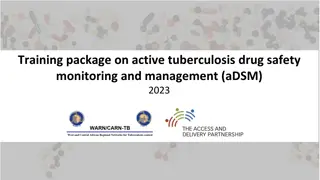Enhancing Tuberculosis Diagnostics Uptake in Kenya: Insights and Solutions
This study delves into the uptake of new tuberculosis diagnostics in Kenya, revealing challenges such as limited access and staffing issues. It highlights preferential coverage of certain diagnostic methods and identifies barriers to utilization, including health system challenges and low disease suspicion index. The report suggests solutions like public awareness campaigns, infrastructure improvements, increased budget allocation, and stakeholder engagement to enhance uptake.
Download Presentation

Please find below an Image/Link to download the presentation.
The content on the website is provided AS IS for your information and personal use only. It may not be sold, licensed, or shared on other websites without obtaining consent from the author. Download presentation by click this link. If you encounter any issues during the download, it is possible that the publisher has removed the file from their server.
E N D
Presentation Transcript
Back ground Tuberculosis is a disease of public health importance: its mode of transmission. The upsurge of drug resistance especially MDR and XDR
WHO TB report 2016 Estimated MDR/RR-TB cases among 1 300 notified pulmonary TB cases. MDR/RR-TB cases tested for resistance to second-line drugs 204 Laboratory-confirmed cases MDR/RR-TB: 326, XDR-TB: 9
Objective To determine the uptake of tuberculosis diagnostics and uncover the impediments for their implementation
Methodology Online Survey in - 32 counties Laboratory Facility questionnaire - 32 counties In-depth interviews 8 previous administrative regions (Provinces)
Key findings Preferential coverage of culture and molecular diagnostics o Xpert MTB/RIF - 90.625 % (29/32) o Culture -6.25% (2/32) o Line Probe Assay 0%
Barrier to utilization I Heath system issues Human resources issues: Under staffing, Limited awareness, utilization knowhow and perception to new TB diagnostics Pathway to care by affected people: patients die before diagnosis is done Distance from services providing TB diagnosis and treatment
Barrier to utilization II Prioritization and profits Low coverage of TB diagnosis and treatment services - tuberculosis care is free and centralized. Disease suspicion index is low among clinician. Decision making Limited stakeholder (Public and staff) involvement in decision making
Solutions to improve the uptake Knowledge empowerment through public awareness campaigns on equipment availability and training of staff both to improve disease suspicion index and equipment utilization to increase demand. Infrastructure improvement to accommodate additional diagnostic tools and maintenance program Increase budget allocation National and County for tuberculosis management and research Research to explore the perception of stakeholders that will encourage buy-in



